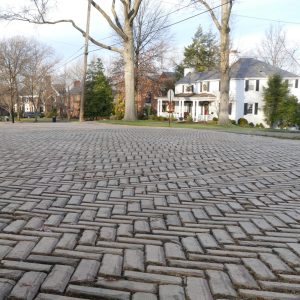Scandinavian Secrets for Happiness

5 Hyggelig practices for a happier life
Nestled in a Knut Wool blanket on the patio of a restaurant overlooking the Smögen harbor while savoring marinated fresh herring with a side of boiled potatoes drizzled in oil and sprinkled with dill, I immediately knew leaving Scandinavia would be a painful goodbye.
During the month of June, I explored Sweden, Denmark and Norway with the hope of discovering what earned these Nordic countries their high ranking on the World Happiness Index.
After experiencing the perfect blend of cheerful people, innovative design, mild summer temperatures, beautiful nature and superb restaurants, I certainly left Scandinavia feeling more content, and dare I say, happier. This is what I learned from the Scandinavians and their balanced approach to living life.
The Danish emphasis on quality-time with friends and coziness can best be summarized by one word: hygge.
Maybe you’ve seen this word floating around Instagram with images of sipping cider by the fire in a thick blanket—it’s been hashtagged 8.9 million times. Or maybe you’ve seen it in articles in home decor magazines trying to sell you a specific candle or blanket. But, don’t be deceived—true hygge cannot be bought.
Writing for the Danish newspaper B.T., writer Kay Xander Mellish said materialist hygge seems exhausting. She emphasized that real hygge is enjoyment without ambition, and a “contented celebration of what you already have.” In true hygge, you’re already together with the people you know and like, so there’s no need to impress with fancy mugs or the perfect wool socks.
If you go back to the etymology, the word is related to the English ‘hug,’ and the old Icelandic ‘hugga,’ meaning to embrace or to soothe. Therefore, hygge is intimately linked with the body and the domestic space as a protective and protected realm.
While the Danes have hygge, the Swedes have their own special word, lagom.
Also untranslatable, the roots of lagom are tied to the communal times of the Vikings when they gathered around the fire after a hard day’s work and passed around horns filled with mead, a honey-fermented beverage. Everyone was supposed to sip their fair share, ‘not too little, not too much, but just right.’ Like the Goldilocks principle, lagom emphasizes the importance of moderation.
When traveling throughout Scandinavia, I experienced what it looks like to live out hygge and lagom, and I want to share some of these secrets to happiness, and what they would look like in our suburb of Mt. Lebanon.

1. Invest in relationships
Whether with family, friends or a significant other, the Scandinavians invest in their relationships. A quick stroll through the grounds of the largest Renaissance residence in Scandinavia, Frederiksborg Castle in Hillerød, Denmark, reveals the extent of Danish emphasis on relationships. Close female friends sit on the small pier and dip their toes in the castle moat, cracking open a bottle of sparkling water and snacking on fruit. Discussing their day under the shade of a large tree, the two exemplify the cozy comfort of hygge. Making your way to the fountain in the center of the castle grounds, you’ll quickly stumble upon grandparents explaining the legacy of Christian IV, Denmark’s most beloved king, to adoring grandkids. Walk past the large reflecting pool and you find yourself at the carefully manicured gardens, where you’ll see countless couples lounging on the lawn, snuggled up close in the cool, 70°F weather.

Investing in relationships means spending intentional time with loved ones. Put away digital distractions and partake in some Danish-style fun. While we don’t have any castles here in Mt. Lebanon, consider exploring Bird Park or strolling through the picturesque neighborhoods and enjoying the architecture we have in our suburb alongside the company of a close friend or family member.

2. Ride your bike
A few blocks into exploring Denmark you’ll soon wonder—does everyone bike? According to Visit Denmark, Danes bike a combined total of 5 million miles every single day, an average of just under one mile per person. In Copenhagen, 44% of all trips to places of work and education are done by bicycle. In fact, almost as many people commute by bicycle in greater Copenhagen as they do in the entire United States. Biking to work makes for a healthier, happier lifestyle, proven by the fact that residents who cycle in Copenhagen request 1.1 million fewer sick days, according to statistics from the Cycling Embassy of Denmark.

Consider biking to the grocery store or to a neighbor’s house instead of dragging your car out of the garage. These small choices can increase your physical activity and time spent in nature.
Passionate about bringing cycling to your city? The Cycling Embassy of Denmark helps people bring cycling to the political agenda of their local leaders. They target professional planners in public administrations and private companies, local and national policy makers, students and civil society organizations.

3. No one is a stranger
My family hired a photographer to take some family portraits one early morning in Copenhagen. Our photographer immigrated to Copenhagen from Albania, and while she hates Danish food, (except for their famous, delicious hot dogs with pickles), she loves Danish culture. During our photoshoot she shared a bit about her perception of Denmark from the perspective of a 7-year resident. Albeit with a critical eye, she believes the education system at times turns kids into obedient robots, she added that the Danes invest in their education system, and no child is left behind. She added that when social welfare provides for your health care, education costs and retirement, you’re able to focus on your relationships with others, and a lot of stress is eliminated from day-to-day life.

With a smile on her face, she noted that when she first moved to Copenhagen the happiness was infectious. She wondered what was wrong with her—she couldn’t stop smiling! Shortly after telling us this story, we ran into one such happy Dane. He rode up on his blue bicycle and told us something in Danish. The photographer explained that we were Americans, and he quickly switched to English. “I’m going to ride behind you and hold up bunny fingers for your photo!” We couldn’t help but laugh as he biked behind us and photobombed our family photo.
4. You are what you eat
The Scandinavian diet emphasizes plant-based, seasonal foods with a healthy dose of fish and seafood and limits processed foods. The main sources of protein are salmon, mackerel and herring, as well as many legumes. This diet doesn’t just highlight the health of the person but focuses on the health of the planet through seasonal, local foods.
The Scandinavian approach to food reflects a broader respect for the planet and environment that trickles down into most every-day decisions. After all, when you pay attention to how you feed and treat your body, you can better engage with the people and world around you.

5. Nature heals
Exploring Smögen, Sweden, we walked along the massive rocky slabs that almost look like bubble boulders. Scaling the side of these rocky cliffs, we made our way to the top, where we could walk closer to the North Sea. We watched the waves and seaweed lap the metal ladders drilled into the side of the rocks.
I’ve always wanted to swim in the North Sea, so I knew the Vallevik Badplats were my chance. Pushing off hard enough from the ladder to avoid the slimy seaweed, I made my way into the sea. Treading water under the golden sun, I was surrounded by Friluftsled Kleven, the narrow waterway that separates Smögen from Kleven.

Full of beautiful nature, Scandinavia is a place meant to be explored. From archipelagos with stone-islands rising from the water surface to little cottages painted in red nestled on the rocks, beauty is everywhere.
While we don’t live near the North Sea, Pennsylvania is full of beautiful state parks and nature preserves. Remember: the great outdoors awaits! I hope these five tips inspire your pursuit of hygge and lagom and the richness it might bring to your life.
While Scandinavia isn’t perfect and certainly has its struggles, there are many lessons to learn from this culture and way of life that produces some of the world’s happiest people!





